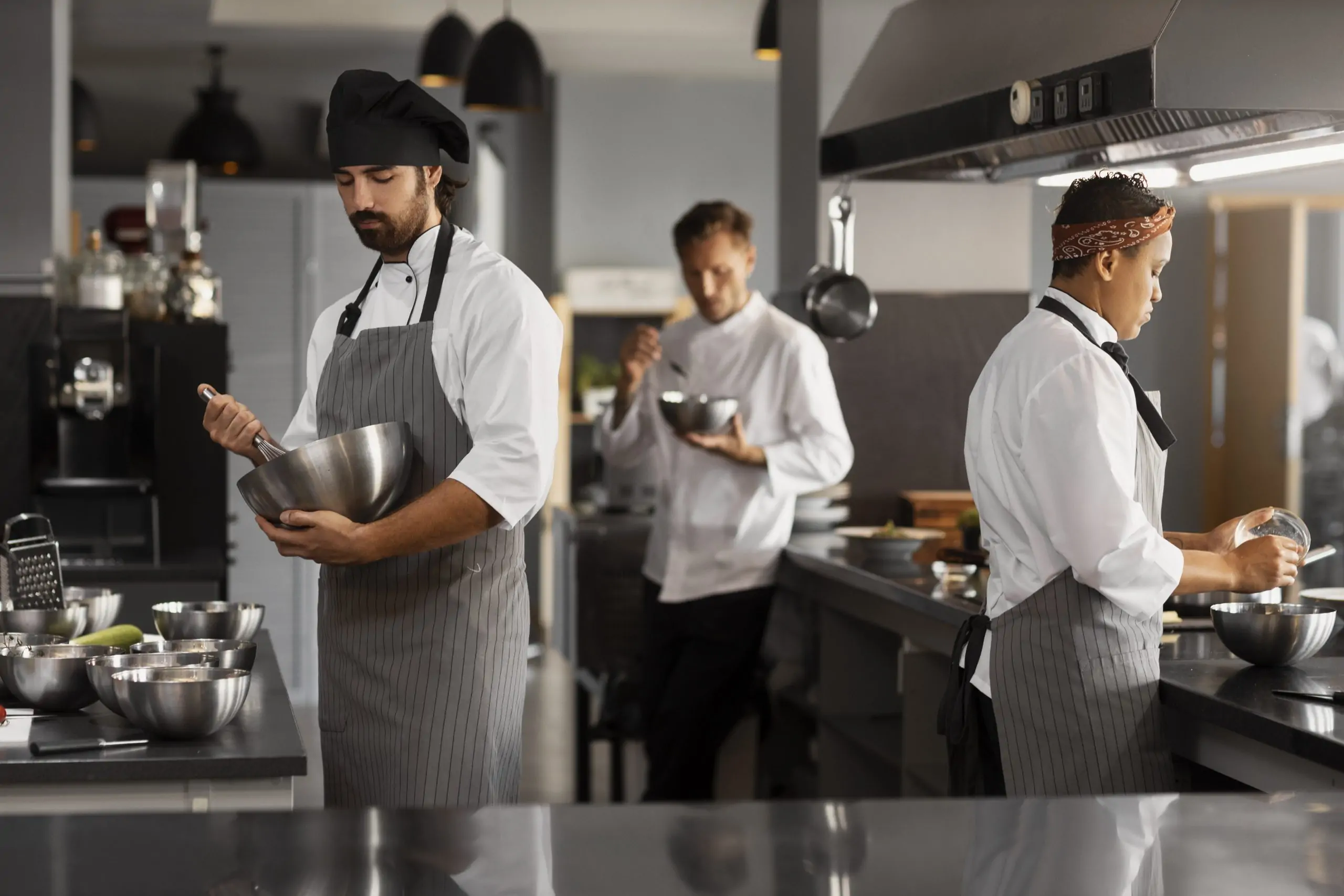Restaurant Equipment and Commercial Kitchen Equipment: A Comprehensive Guide for Food Service Success
Running a successful restaurant requires not only a passion for food but also an investment in high-quality restaurant equipment and commercial kitchen equipment. The right equipment can increase efficiency, improve food quality, and ensure a safe and productive work environment. Whether you are opening a new restaurant or upgrading your current kitchen, understanding the types of equipment available and their purposes is crucial. This article will delve into the essential equipment needed for a commercial kitchen, explore the factors to consider when selecting this equipment, and discuss trends and innovations in the industry.
1. Importance of Quality Restaurant Equipment
Commercial kitchen equipment is the backbone of any restaurant. It enables chefs and kitchen staff to prepare, cook, and serve food efficiently. Quality equipment not only enhances the cooking process but also ensures the safety and satisfaction of your customers. Poor quality or inadequate equipment can lead to slower service, increased operating costs, and even health and safety issues.
Investing in reliable restaurant equipment can also contribute to cost savings in the long run. High-quality equipment typically lasts longer, requires less maintenance, and is more energy-efficient. As a result, restaurant owners can save on repair costs, reduce utility bills, and minimize downtime, allowing for smoother operations.
2. Essential Types of Commercial Kitchen Equipment
A well-equipped commercial kitchen must have a variety of specialized tools and machines to handle different cooking methods and food preparation tasks. Here is a breakdown of some essential equipment needed in a commercial kitchen:
A. Cooking Equipment
- Ranges and Ovens:
- Gas Ranges: Popular for their quick heat-up times and precise temperature control, gas ranges are ideal for sautéing, boiling, and frying.
- Electric Ranges: Known for their even heat distribution, electric ranges are a good option for baking and slow cooking.
- Combination Ovens: These ovens allow for multiple cooking methods, such as convection and steam, in one appliance. They are versatile and can cook various types of dishes simultaneously.
- Deep Fryers:
- Countertop Fryers: Suitable for small kitchens, countertop fryers are compact and can fry a moderate amount of food.
- Floor Fryers: Designed for high-volume frying, floor fryers are equipped with larger oil capacities and are perfect for busy restaurants.
- Griddles and Grills:
- Flat-Top Griddles: Used for cooking foods like pancakes, burgers, and eggs, flat-top griddles provide a large, even cooking surface.
- Charbroilers: Often used for grilling steaks, chicken, and vegetables, charbroilers give food a distinct smoky flavor.
- Steamers:
- Countertop Steamers: Ideal for small kitchens, these steamers are compact and efficient.
- Floor Steamers: Larger and more powerful, floor steamers are capable of cooking large quantities of food, making them ideal for high-volume restaurants.
- Microwave Ovens:
- Commercial microwaves are essential for quickly heating or reheating food. They are more powerful and durable than domestic microwaves, ensuring they can handle the demands of a busy kitchen.
B. Food Preparation Equipment
- Food Processors:
- Essential for chopping, slicing, and dicing vegetables and fruits, food processors are versatile tools that save time and reduce manual labor.
- Mixers:
- Planetary Mixers: Used for mixing dough, batter, and other ingredients, planetary mixers are highly versatile and are commonly used in bakeries and pizzerias.
- Spiral Mixers: Ideal for heavy doughs, such as bread or pizza dough, spiral mixers ensure consistent and thorough mixing.
- Blenders:
- Commercial blenders are designed for heavy-duty use and can handle blending large quantities of ingredients. They are essential for making sauces, soups, and smoothies.
- Meat Slicers:
- Used for slicing meats, cheeses, and other ingredients, meat slicers ensure uniform cuts and save time during food preparation.
C. Refrigeration Equipment
- Walk-In Coolers and Freezers:
- Essential for storing large quantities of perishable items, walk-in coolers and freezers provide ample space for bulk storage.
- Reach-In Refrigerators and Freezers:
- Designed for easy access, reach-in refrigerators and freezers are perfect for storing ingredients that need to be readily available during food preparation.
- Under-Counter Refrigerators:
- These compact refrigerators fit under countertops, providing convenient access to frequently used ingredients without taking up valuable floor space.
- Blast Chillers:
- Blast chillers rapidly cool down hot foods, preserving their quality and preventing bacterial growth. They are ideal for restaurants that prepare food in advance.
D. Storage and Shelving Equipment
- Shelving Units:
- Durable shelving units are essential for storing dry goods, canned foods, and kitchen supplies. Stainless steel shelving is a popular choice due to its durability and easy-to-clean surface.
- Food Storage Containers:
- Proper storage containers are essential for keeping ingredients fresh and organized. Food-grade containers are available in various sizes and shapes to accommodate different storage needs.
- Ingredient Bins:
- Used for storing bulk ingredients, such as flour, sugar, and grains, ingredient bins are typically placed near the food preparation area for easy access.
E. Cleaning and Sanitation Equipment
- Dishwashers:
- Undercounter Dishwashers: Ideal for small restaurants, these compact dishwashers fit under countertops and can handle a moderate amount of dishes.
- Conveyor Dishwashers: Designed for high-volume dishwashing, conveyor dishwashers can clean large quantities of dishes, utensils, and cookware quickly and efficiently.
- Sinks:
- Three-Compartment Sinks: Required by health codes in many areas, these sinks are used for washing, rinsing, and sanitizing dishes and cookware.
- Prep Sinks: Essential for washing vegetables, fruits, and other ingredients, prep sinks are typically located near the food preparation area.
- Handwashing Stations:
- Handwashing stations are mandatory in commercial kitchens to ensure proper hand hygiene among staff. They should be strategically placed for easy access.
- Grease Traps:
- Installed in the plumbing system, grease traps capture grease, fats, and oils from kitchen wastewater, preventing blockages and ensuring compliance with health and safety regulations.
3. Factors to Consider When Choosing Commercial Kitchen Equipment
Selecting the right restaurant equipment involves considering various factors, such as kitchen size, budget, and specific needs. Here are some key considerations:
A. Space and Layout
- The layout of your kitchen plays a significant role in determining the type and size of equipment you can accommodate. Ensure you have enough space for each piece of equipment and that it fits into the workflow efficiently.
- Adhering to safety regulations and ensuring proper ventilation is crucial, especially when dealing with cooking equipment like ranges and fryers.
B. Budget and Financing
- Restaurant equipment can be a significant investment, so it is essential to set a budget and prioritize essential items. Consider financing options or leasing equipment to manage initial costs better.
C. Energy Efficiency
- Energy-efficient equipment can lead to substantial savings on utility bills. Look for equipment with ENERGY STAR ratings, which indicates they meet energy-saving standards.
D. Durability and Warranty
- Investing in durable, high-quality equipment can reduce repair costs and extend the lifespan of your equipment. Consider the warranty terms and customer support provided by the manufacturer.
E. Compliance with Health and Safety Standards
- Ensure all equipment complies with local health and safety regulations. This includes NSF certification, which indicates that the equipment is safe for food handling.
4. Trends and Innovations in Commercial Kitchen Equipment
The restaurant industry is continually evolving, and new technologies and trends are shaping how commercial kitchens operate. Here are some notable trends:
A. Smart Kitchen Equipment
- Internet of Things (IoT) Integration: Smart equipment connected to the internet allows for remote monitoring and control, which can improve efficiency and maintenance.
- Automated Cooking Equipment: Automated fryers, ovens, and even robotic chefs are becoming more common, reducing labor costs and ensuring consistent quality.
B. Energy-Efficient and Sustainable Equipment
- As sustainability becomes a priority, many manufacturers are producing energy-efficient equipment that reduces carbon footprint. This includes induction cooktops, which are highly efficient and emit less heat.
- Some equipment now includes features like heat recovery, which reuses energy from cooking processes to heat water, further saving on energy costs.
C. Modular Kitchen Equipment
- Modular equipment allows for flexibility and adaptability in kitchen design. This trend is particularly popular in fast-casual restaurants that require customizable and efficient kitchen layouts.
D. Multi-Function Equipment
- Multi-function equipment, such as combi ovens and griddles with interchangeable plates, are ideal for smaller kitchens or restaurants with diverse menus. They reduce the need for multiple appliances, saving space and costs.
5. Maintenance and Care for Commercial Kitchen Equipment
Proper maintenance is essential to keep restaurant equipment in good working condition and prolong its lifespan. Regular cleaning, servicing, and prompt repairs are key components of equipment maintenance. Here are some tips:
A. Daily Cleaning
- Clean all cooking surfaces, countertops, and sinks daily to prevent the buildup of grease and food particles. Use appropriate cleaning products and follow the manufacturer’s guidelines for each piece of equipment.
B. Scheduled Inspections
- Regularly inspect equipment for signs of wear and tear, such as loose screws, rust, or malfunctioning parts. Addressing minor issues early can prevent costly repairs and downtime.
C. Professional Servicing
- Schedule professional servicing for complex equipment, such as ovens and refrigerators, to ensure they are operating efficiently. Regular servicing can also help identify potential issues before they become serious problems.
D. Staff Training
- Train your staff on the proper use and care of each piece of equipment. This includes knowing how to operate machinery safely, perform basic troubleshooting, and adhere to cleaning protocols.
6. Purchasing Tips and Where to Buy Restaurant Equipment
Purchasing commercial kitchen equipment requires research and careful consideration. Here are some tips to help you make informed decisions:
A. Research Reputable Suppliers
- Purchase equipment from reputable suppliers that specialize in commercial kitchen equipment. Look for suppliers with positive reviews and a proven track record.
B. Compare Prices and Features
- Compare prices and features of similar equipment from different brands to find the best value for your money. Consider the total cost of ownership, including installation, maintenance, and energy costs.
C. Explore Used Equipment Options
- If you are on a tight budget, consider buying used equipment. Many suppliers offer refurbished equipment that has been tested and certified, providing a cost-effective alternative to new items.
D. Take Advantage of Warranties and Support
- Choose equipment with warranties and support services, as this can save you money on repairs and provide peace of mind.
Conclusion
Choosing the right restaurant equipment is crucial for the success of any food service business. By investing in high-quality, efficient, and durable commercial kitchen equipment, restaurant owners can enhance productivity, improve food quality, and ensure a safe working environment for their staff. Whether you are opening a new restaurant or upgrading an existing kitchen, understanding the different types of equipment available, considering factors like space and budget, and staying informed about industry trends will help you make the best decisions for your business. With the right equipment in place, your restaurant will be well-equipped to meet the demands of a busy kitchen and deliver exceptional dining experiences to your customers.


